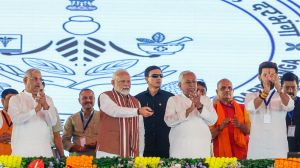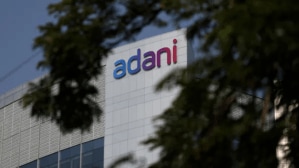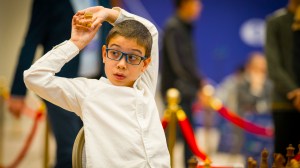Beyond the moment
Why Pakistans reinstated chief justice will have to tread very carefully
The deposed chief justice of Pakistan has been restored,the opposition,notably the Pakistan Muslim League-Nawaz,has called off the Long March,there is jubilation all round. What next?
In that question resides the devil. But lets not undermine the moment. A victory has been scored,a wrong righted. That,in and of itself,is an achievement of which Pakistanis should be proud. The moment definitely belongs to all those who struggled to get the CJP restored.
Time is serial,though,and the moment is already history. Thats where the issue must go,beyond the person of the CJP to the institution of the judiciary and further on to the judiciarys interaction with other institutions of state and society.
What the euphoria of the moment can afford to ignore,the sobriety of reflection over the future cannot. Consider specific evidence.
Exhibit A: Analysts,including former generals,have appeared on TV and praised the army for playing a positive role. One of the tribe,without any touch of irony,said that by streamlining democracy the army had reclaimed its prestige and shown that it would not intervene in politics.
But it did! Thats what its mediation was all about. True,it took the high tide of popular sentiment,but the fact that it had had to break the logjam between the two major political forces by weighing in means that,all said,it retains its arbitration role in the power structure of Pakistan. Even at the best of times for other institutions and the army is just emerging from a long period of direct rule,trying hard to distance itself from its former chiefs legacy it remains primus inter pares.
Exhibit B: Lets hark back to where and how the crisis began. The Supreme Court under CJP Iftikhar Chaudhry had begun to cross the fine line between its powers to adjudicate and the executives need to take political and policy decisions. Courts do travel the distance from fundamentals to policy but such movement must remain the exception. Under Justice Chaudhry,it became the norm.
This is what caused the then-government of General Pervez Musharraf (retd) to try and get rid of Justice Chaudhry. The action was widely unpopular and Musharraf tucked tail and let the SC restore Justice Chaudhry. The SC,pointing to the Presidential Reference as based on mala fide,determined that it therefore did not warrant judicial scrutiny by the Supreme Judicial Council.
The restoration,a victory,should have cautioned the SC against too much adventurism. Instead,it instilled a heady feeling that everything was possible now that Musharraf had been licked. Pushed to the wall,he,however,struck on November 3.
The current crisis,which nearly cost Pakistan its new government,can be traced back to that period.
While Musharraf is gone,some of those issues,including determining the probity of the National Reconciliation Ordinance,remain. What would the restored CJP do now? The Amir of Jamaat-e Islami,Qazi Hussain Ahmed,is already expecting the CJP to deliver a judicial revolution. Would he? If he does,Pakistan will be thrown back into the vortex of another political crisis.
Exhibit C: Linked with this is the issue of the politicisation of the restored CJP. Lawyers reject this argument pointing to the outgoing CJP,Andul Hameed Dogar,as more tainted politically. True that,but it misses the point about Justice Chaudhry. The struggle that was waged was essentially political; neither can law be divorced from politics in any Dworkinian sense. Yet,the issue of being on the bench becomes a legitimate concern when a judge,having been in the middle of a political campaign,has to adjudicate cases where people expect,almost demand,a certain kind of verdict rather than what can or cannot be determined by the court through accepted procedures of law.
The SC under Justice Dogar faced the same problem in cases against Brothers Sharif. Even if,in theory,the court had sound legal grounds to disqualify them,the issue had become political rather than remaining anchored in law. Any verdict other than one exonerating them was liable to kick off a political campaign of protest,as it did.
This can now be applied in reverse to the restored CJP. If he absents himself from all such cases,people expecting him to clean up the Augean stables would be disappointed. Even more troublesome,the political opponents of the PPP,having drawn blood,would like Justice Chaudhry to help them finish the job.
Politics would once again spoil to influence law.
Exhibit D: Expectations that the restoration would lead to strengthening of the judiciary and,even more ambitiously,constitutionalism,a much broader concept,may be misplaced. While this is a necessary step in that direction,it is not sufficient. The integrity of one institution is a hollow concept. State institutions work in relation to each other. To
expect one to show integrity in the absence of an overall institutional culture of integrity is putting too high a premium on optimism.
Finally,in situations where politics and law intersect in the absence of any rules of the game,states and societies beget anomalies because politics invariably ends up determining both the nature and the reach of law.
In Pakistan it is difficult to determine where to begin and how far to go back to set things right. Such situations call for pragmatism rather than sheer idealism,which is why Justice Chaudhry,the PCO 1 judge,was acceptable while PCO 2 judges were not. Some residual matter from the past has to be accepted to move forward.
Justice Chaudhry will therefore have to tread very carefully,balancing between the passionate idealism of the street and the practical demands of the courts functioning in relation to other institutions of state. Not an easy job,given that his restoration has not changed much as far as the power structures of the state and their expression are concerned.
The writer is Op-Ed Editor,Daily Times,and Consulting Editor, The Friday Times,Lahore. The views expressed are his own express@expressindia.com





- 01
- 02
- 03
- 04
- 05


























